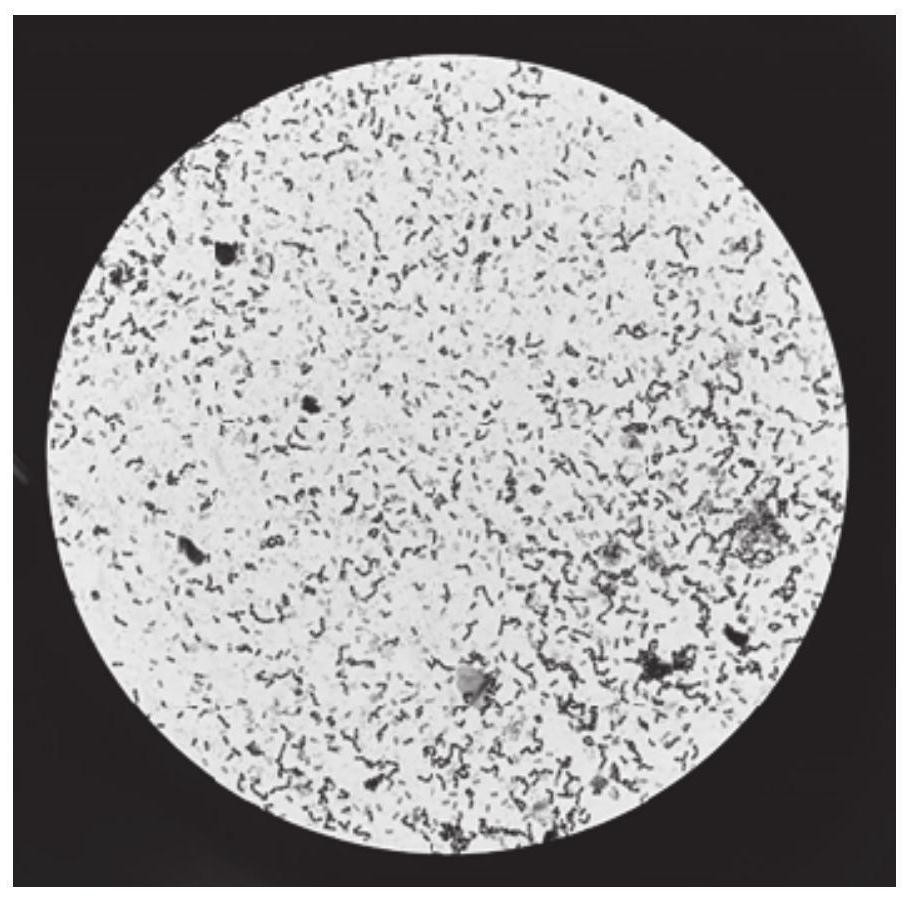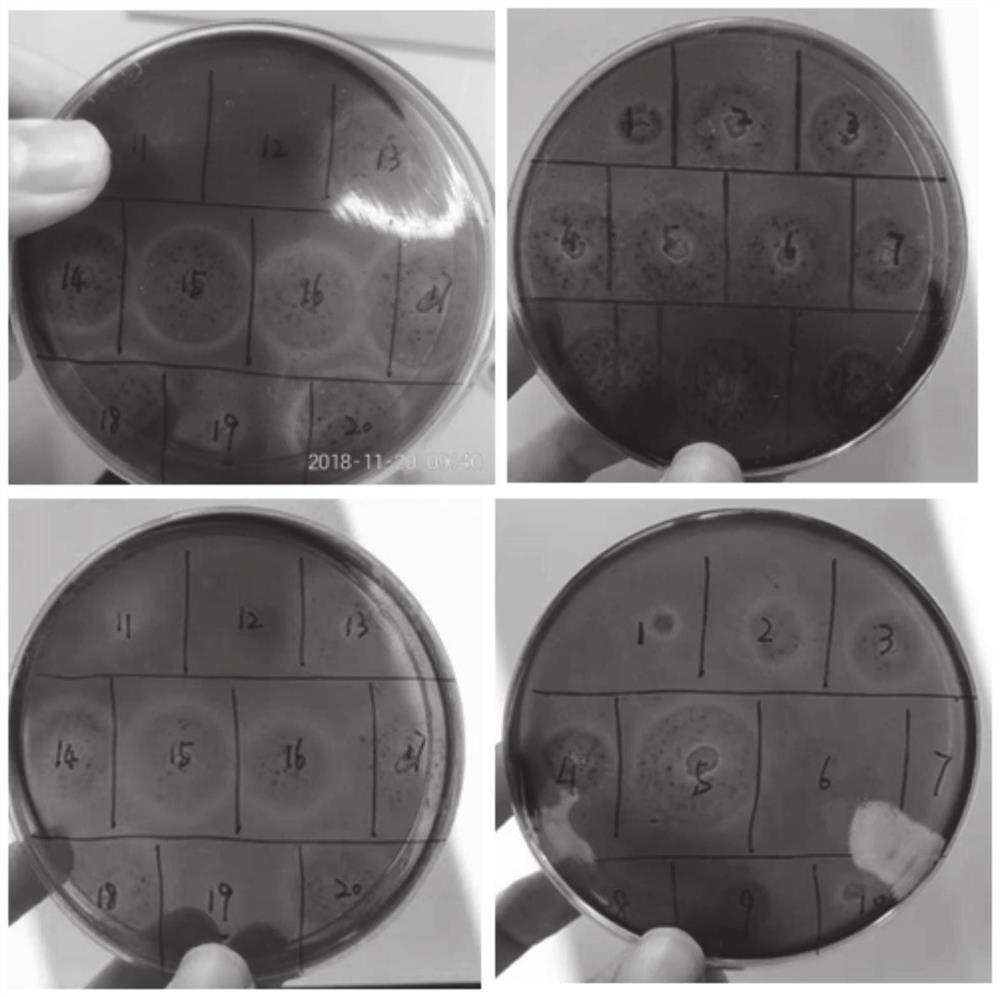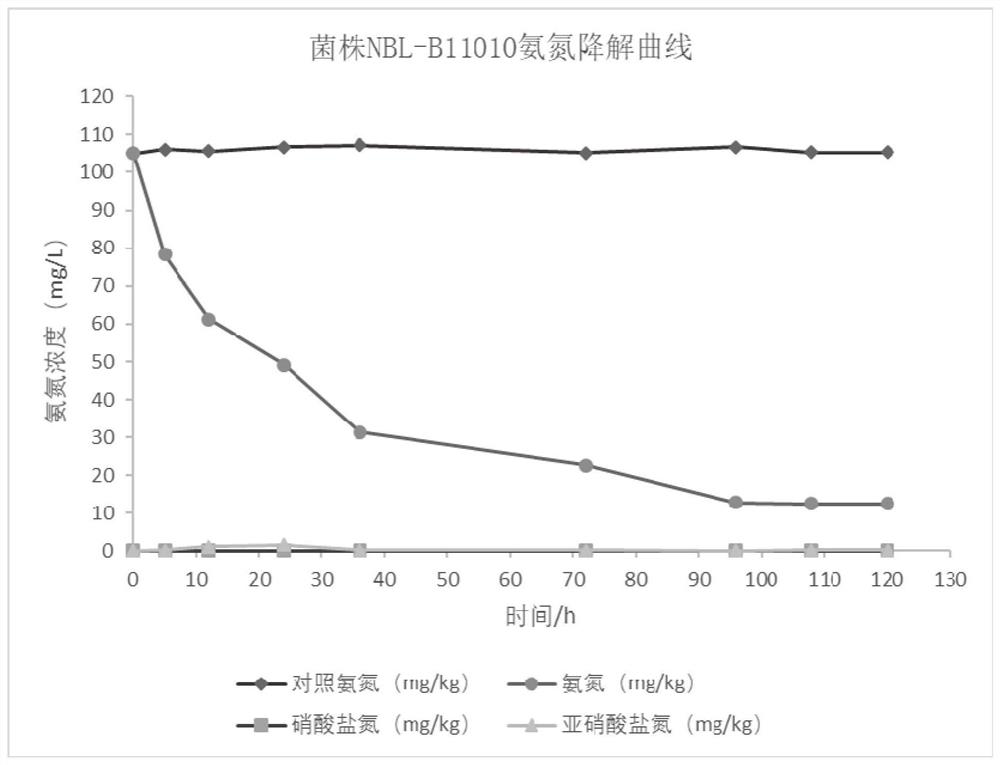Cellulose degradation strain with sewage ammonia nitrogen degradation capacity and application thereof
A strain, Bacillus technology, applied in the field of microorganisms, can solve the problem of low enzyme activity
- Summary
- Abstract
- Description
- Claims
- Application Information
AI Technical Summary
Problems solved by technology
Method used
Image
Examples
Embodiment 1
[0069] Embodiment one, the screening of strain
[0070] 1. Materials and methods
[0071] 1.1 Samples: 6 samples of decayed straw materials from different farmlands were used as samples.
[0072] 1.2 Screening medium:
[0073] The strain enrichment medium is as follows: potassium dihydrogen phosphate, sodium chloride, ferric chloride, magnesium sulfate, sodium nitrate and calcium chloride are added to water, after mixing evenly, wheat straw cut into about 2 cm length is added as the only carbon The source is available, its pH is 7.0. Each liter of water contains 1.0 g of potassium dihydrogen phosphate, 0.1 g of sodium chloride, 0.01 g of ferric chloride, 0.3 g of magnesium sulfate, 2.5 g of sodium nitrate, and 0.1 g of calcium chloride.
[0074] The preparation method of the CMC-Na Congo red culture medium is as follows: sodium carboxymethylcellulose, potassium nitrate, dipotassium hydrogen phosphate, magnesium sulfate, sodium chloride and agar are added into water, and mixed...
Embodiment 2
[0110] Embodiment two, identification and safety test of bacterial classification
[0111] 1. Materials and methods
[0112] 1.1 Bacterial strains: After primary screening and re-screening of microorganisms isolated from spoiled straw and other samples, a total of 4 strains with high cellulose degradation performance were screened out, and the numbers are NBL-B11010, NBL-B12006, and NBL-B12010 respectively. and NBL-B11026.
[0113] 1.2 Morphological identification and molecular identification of bacteria: Unless otherwise specified, general morphological and molecular tests were carried out referring to "Bergey's Bacterial Identification Manual" (9th edition) and "Microbiology Experimental Manual".
[0114] 1.3 Safety test: The phytotoxicity test of the bacteria was carried out using "Pearl" tomato seeds and "Crystal" lettuce seeds. The seeds were soaked in 2% concentration of single bacterial solution, mixed bacterial solution (1:1:1) and distilled water (control group) for...
Embodiment 3
[0124]Embodiment 3, Bacillus velezensis strain (Bacillus velezensis strain) NBL-B11010 produces cellulase condition optimization
[0125] 1. Materials and methods
[0126] 1.1 Strains: NBL-B11010
[0127] 1.2 Method:
[0128] The effects of rotation speed, temperature, inoculation volume of bacterial solution, initial pH, nitrogen source and carbon source on cellulase production of the strain were investigated by single factor experiment, and the optimal fermentation conditions were determined.
[0129] 2 Test content and results
[0130] 2.1 Shaker speed
[0131] During the strain cultivation process, the speed of the shaking table will affect the contact between the strain and nutrients, and also affect the contact between the strain and oxygen. Too high or too low rotation speed will affect its cellulase production effect. With the increase of the culture rotation speed, the cellulase-producing ability of the bacteria first increased and then decreased. When the cultur...
PUM
| Property | Measurement | Unit |
|---|---|---|
| length | aaaaa | aaaaa |
Abstract
Description
Claims
Application Information
 Login to View More
Login to View More - R&D
- Intellectual Property
- Life Sciences
- Materials
- Tech Scout
- Unparalleled Data Quality
- Higher Quality Content
- 60% Fewer Hallucinations
Browse by: Latest US Patents, China's latest patents, Technical Efficacy Thesaurus, Application Domain, Technology Topic, Popular Technical Reports.
© 2025 PatSnap. All rights reserved.Legal|Privacy policy|Modern Slavery Act Transparency Statement|Sitemap|About US| Contact US: help@patsnap.com



